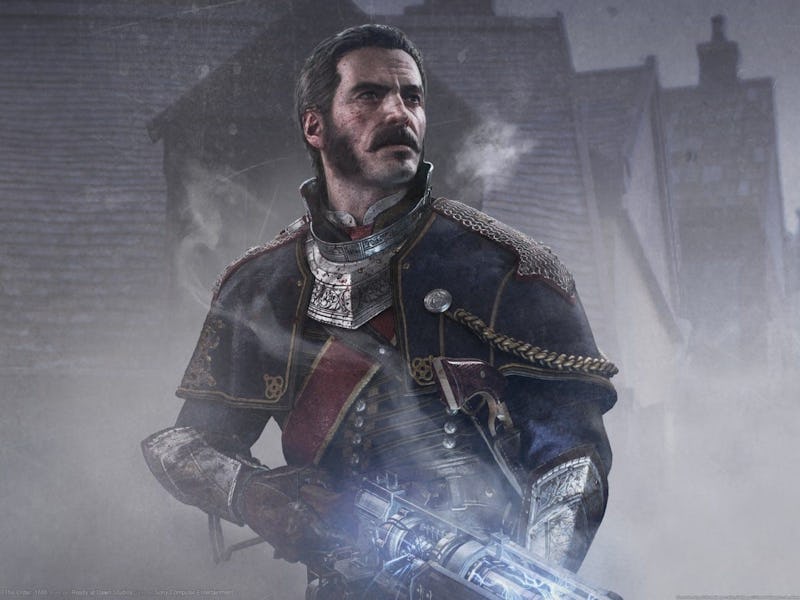Sony Turned Down a Sequel to the PS4's Most Underrated Exclusive
A real missed opportunity.

The co-founder of the studio Ready at Dawn, Andrea Pessino, has said Sony turned down a sequel to The Order: 1886 — an utterly gorgeous but undoubtedly flawed exclusive that was released on PS4 in 2015. It’s a game filled with good ideas that simply couldn’t fully deliver on them, but it’s a real shame we never got a sequel that could have realized the ultimate vision.
Talking to MinnMax, Pessino talked about how excited Ready at Dawn was for a sequel, but how hard the project would have been, if it had been greenlit. The Order is, to this day, one of the most visually impressive games ever made — but it’s clear concessions had to be made in the process, and the game’s critical reception reflected that.
“It would have been an incredible sequel, I can tell you that for a fact,” Pessino said, “We pitched the sequel to Sony regardless [of critical reception] and, in a way, it’s better that they passed because if we thought we were going to be screwed before, man, with the sequel, we would have signed our life away.”
The Order: 1886 was a third-person shooter set in an alternate-history steampunk version of Victorian London. Around the turn of the 18th century, humans started developing bestial traits, essentially turning into werewolves. The new “half-breeds” launched a battle against humanity, and were locked in a statement until the Industrial Revolution. Now, King Arthur and his Order of Knights use a mysterious liquid called Blackwater to give themselves healing powers that allow them to fight the beasts. In 1886, you take on the role of a key member of the Knights, Sir Galahad, as London is plunged into chaos by both beasts and anarchist insurgents.
The story setup is a legitimately fantastic idea, and the game actually does a good job of building it out. The Order’s steampunk aesthetic is tremendously well-realized, with mist-filled London streets highlighted by a boom of tech, from guns that shoot arcs of lightning to the soft glow of street lamps. While the visual presentation of The Order is easily its strongest aspect, stellar voice acting and some fascinating lore really help draw you into the world too.
Where the problems start to arise is with The Order’s gameplay, as there’s a reason many people called it an interactive movie. The Order is an extremely short game, clocking in at only 5-6 hours, a lot of which is simply walking around. Ostensibly the game is a third-person cover shooter like Gears, but the shooting just feels unsatisfying. It’s not bad, but really lacks a unique spark, which makes The Order feel — at least gameplay-wise — like every other shooter out there. But the foundation for something incredible was truly there, and those gameplay woes could be quite easily improved on in a sequel.
The Order forces a 2.40:1 aspect ratio to make the game more cinematic, but it’s undoubtedly gorgeous.
But unfortunately, that didn’t pan out, and Pessino seems somewhat glad that it didn’t. The PS4 era for Sony was largely focused on those big cinematic single-player experiences, but we also know toward the tail-end was when the company started shifting its focus to live service and multiplayer.
Pessino notes that Ready at Dawn already had a difficult relationship with Sony on the first game, having to make a host of cuts to hit deadlines and push the game out before it was really ready. While Pessino says this is standard for third-party publishers, he also thinks it would have put the studio in a really tough position for a sequel.
“We were going to do it just because we wanted to deliver it to the player but we would have been... terrible budget, budget would be small,” Pessino said, “We would have been completely at the mercy of any decisions and things because we had no leverage whatsoever.”
In retrospect now, all these years later, it’s easy to see that Sony has made some questionable decisions with its direction. After all, Sony’s doomed live service game Concord entered development roughly in 2016, which would have been just a year or so after the release of The Order.
While on paper a sequel could have done a lot to fix The Order’s problems and capitalize on its good ideas, the reality might be that we would have ended up with another game rushed out the door that simply couldn’t live up to its potential.